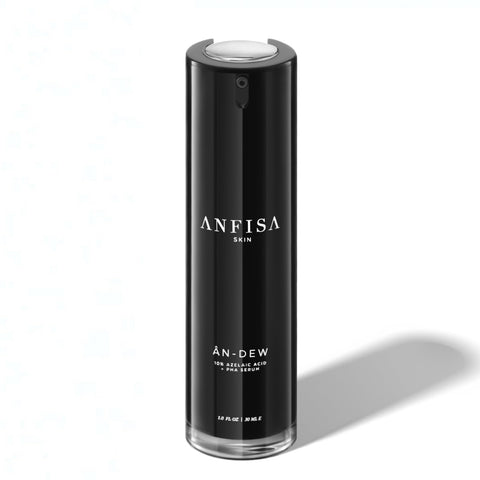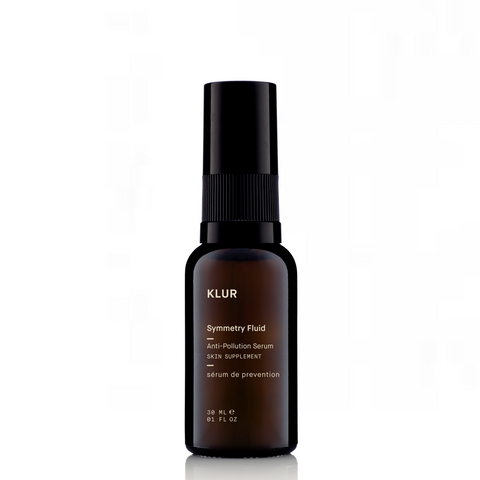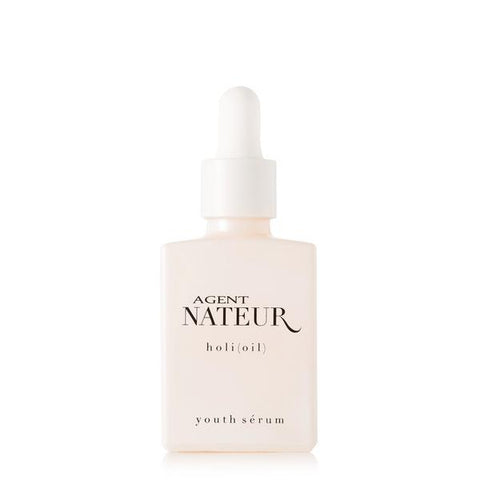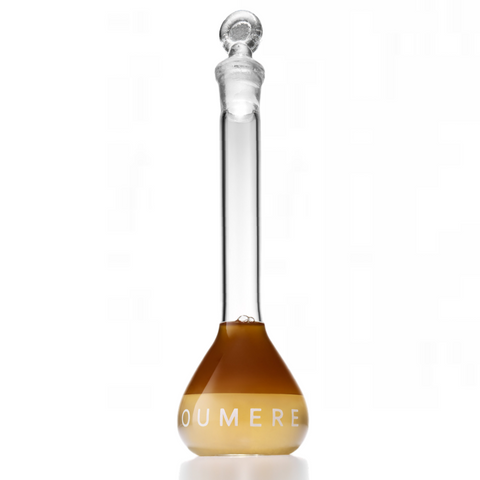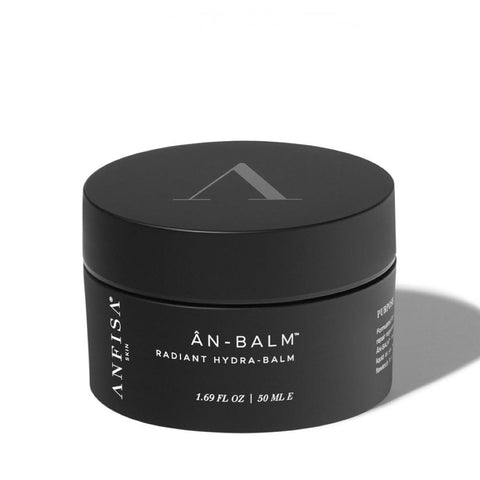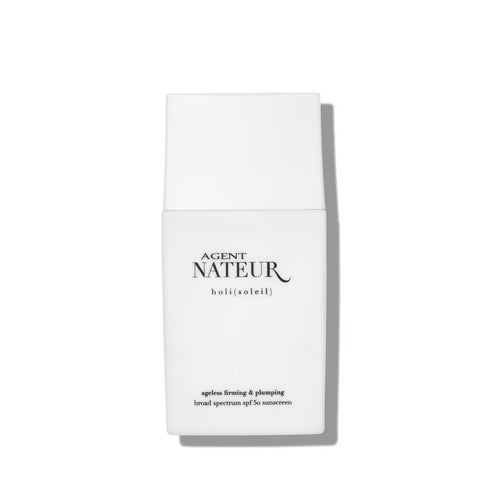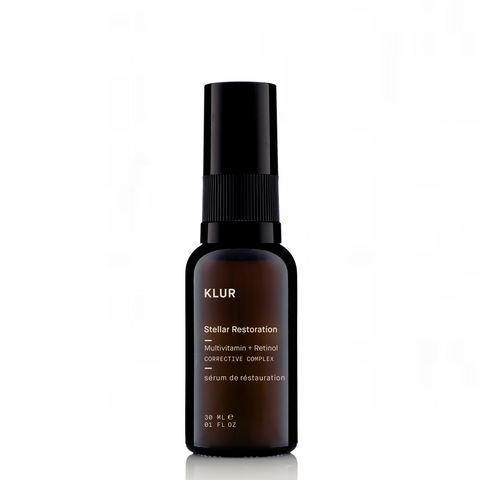Everything About Rosacea: Causes, Symptoms, Triggers and Treatment
June 30, 2024
Rosacea is a common chronic inflammatory skin condition that primarily affects the face. Due to its complex nature, the exact cause of rosacea has not been definitively identified in medical science, and as a result, there is no cure available. Additionally, due to the similarity of its symptoms with other skin issues, misdiagnosis is quite common.
This article will discuss in-depth the causes, symptoms, triggers, and effective care methods of rosacea to alleviate existing symptoms and reduce the chances of future flare-ups.
Rosacea is a chronic inflammatory skin condition that primarily affects the central areas of the face, including the cheeks, nose, chin, forehead, and occasionally around the eyes, ears, neck, scalp, and chest. It typically begins to manifest after the age of 30, with varying symptoms and periods of flare-ups and remission.
Rosacea symptoms usually start with redness on both cheeks and the nose (but can also occur on the chin, forehead, and neck) during a flare-up. This is followed by a sensation of stinging or burning, and eventually widespread redness, visible broken blood vessels (spider veins), papules, scaling, and patches. Initially, these symptoms may only appear temporarily, but over time, they can become more persistent and chronic.
The exact cause and pathophysiology of rosacea are not yet fully understood in medical science. However, recent research suggests that innate immune system, adaptive immune system, and neurovascular dysregulation play significant roles in the development of rosacea. This is because genetic and environmental factors directly interact with the skin's neurovascular system, leading to the release of neuropeptides and neuroimmune mediators that contribute to the various symptoms of roseacea. These factors also trigger the release of various mediators that induce and exacerbate roseacea symptoms, such as keratinocytes (for example cathelicidin, vascular endothelial growth factor, and endothelin-1), endothelial cells (nitric oxide), mast cells (cathelicidin and matrix metalloproteinases), macrophages (interferon-gamma, tumor necrosis factor, matrix metalloproteinases, and interleukin-26), and T-helper type 1 and 17 cells (TH1 and TH17).
Additionally, facial vascular abnormalities, impaired skin barrier function, dysbiosis of the skin microbiome, exaggerated reactions to common skin mites, and a previous infection of H. pylori bacteria, are also considered contributing factors in rosacea.
Generally speaking, there are four main types of rosacea:
|Erythematotelangiectatic

- Central areas of the face become flushed with redness
- Visible broken blood vessels (vascular)
- Symptoms appearing on both sides of the face
- Skin swelling
- Highly sensitive skin with stinging and burning sensations
- The skin becomes dry, rough, or scaly
|Papulopustular

- Pus- or fluid-filled pimples that are similar to acne but come and go unexpectedly
- The skin becomes oily
- Highly sensitive skin with stinging and burning sensations
- Visible broken blood vessels (vascular)
- The skin develops raised areas known as plaques
- Symptoms appearing on both sides of the face
|Phymatous

- A less common variation, primarily seen on the face of males
- Skin texture becomes uneven and bumpy
- The skin on the nose thickens, resulting in a visually enlarged nose (known as "rhinophyma")
- The skin on the chin, forehead, cheeks, and ears may also thicken.
- Visible broken blood vessels
- The pores appear significantly enlarged
- The skin becomes oily
- Symptoms appearing on both sides of the face and/or ears
|Ocular

- Increased tearing and frequent redness in the eyes
- Often feeling like there is sand in the eyes
- Burning or stinging sensation in the eyes
- Excessive dryness and itching in the eyes
- Sensitivity to light
- Blurry vision
- Visible broken blood vessels on the eyelids.
- Development of cysts on the eyelids
- Decreased clarity of vision compared to before
- Symptoms appearing on both left and right eyes
Many people (even dermatologists!) often mistake long-term facial redness and acne-like bumps for rosacea, but in reality, damaged skin barrier, sensitized skin, severe acne, folliculitis, other skin inflammations, and skin mites can all cause symptoms similar to erythematotelangiectatic and papulopustular rosacea.
One key factor to determine if it is rosacea is whether the symptoms appear symmetrically on the face. Since rosacea comes from some as-yet-unknown internal predisposition, which means medically speaking it is expected to manifest on the skin bilaterally and symmetrically (on both sides of the face and/or body), instead of unilaterally (on one side of the face and/or body), with very few exceptions. It is unlikely to only manifest on one side.
Another key factor is the presence of visible broken blood vessels, which is one of the main symptoms scross all kinds of rosacea.
If the symptoms occur only on one side of the face, or there are no visible broken blood vessels, it is highly likely not rosacea but rather one of the following issues:
- Allergic contact dermatitis (a reaction to substances that come into contact with the face, such as glasses, phones, skincare products, hair care products, cosmetics, bedsheets, pillowcases, towels, tissues, animal fur, dust, pollen, etc.)
- Folliculitis
- Sun-induced phototoxic or photoallergic dermatitis (especially when taking medications that cause sensitivity to sunlight, such as non-steroidal anti-inflammatory drugs, hypertension medications, etc.)
- Superficial fungal infection, also known as tinea faciei
- Demodex folliculorum infestation, i.e. demodex mites (everyone has some mites in their pores, but occasionally, they can cause severe inflammation when present in high densities and also because of immune imbalance)
The above mentioned factors such as innate immune system, adaptive immune system, neurovascular dysregulation, vascular abnormalities, dysbiosis of the skin microbiome and barrier dysfunction are the main causes of rosacea. Whilst, the factors that can exacerbate the aforementioned issues and trigger rosacea symptoms include but not limited to:
- Sun exposure
- Pollutants
- Temperature changes, either hot or cold
- Vasodilating medications, including certain blood pressure medications
- Stress
- Hormonal fluctuations
- Aerobic exercise such as running, swimming, jumping rope, dancing, high-impact activities (e.g., basketball, badminton), high-intensity interval training, boxing, etc.
- Non-weather-related heat sources such as saunas, hot yoga, heaters, steam, etc.
- Certain skincare or hair care ingredients
- Improper skincare practices
- Hot beverages
- Alcohol
- Inflammatory foods, including dairy products, gluten, sugar, eggs, soy, and nightshades such as tomatoes, eggplants, potatoes, etc. For details, read: How Different Foods Negatively Afffect the Skin 及 How Different Foods Negatively Afffect the Skin - Part 2.
It is not true that rosacea skin can only use the mildest moisturizing and soothing products! In fact, understanding how to use other effective ingredients and skincare products is crucial for effectively relieving existing rosacea symptoms and reducing the chances of future flare-ups. These include:
|Use Skincare Products with Live Probiotic Cultures
Researches have discovered that many people with rosacea are missing the good bacteria on their skin that help prevent inflammation, and have an overgrowth of various bad bacteria. By using skincare products that contain live probiotic cultures, these microorganisms improve and strengthen the skin’s natural protective mechanisms and maintain an equilibrium of good bacteria on the skin’s surface.
Topical live probiotic cultures work by secreting anti-bacterial, antimicrobial and anti-inflammatory substances that penetrate bad bacteria and kill them before they trigger an inflammation. They also provide a protective shield to keep bad bacteria from reaching skin cells, as well as calm parts of the skin cells that want to react to the bad bacteria, thus stopping them from sending an “attack” message to the skin’s immune system that leads to redness, swelling, patchy skin, or acne-like bumps.
This is why live probiotic cultures are excellent for skin with issues such as rosacea, as well as eczema, psoriasis, topical dermatitis, and acne.
Now, treating inflammations is not the only skincare benefit live probiotic cultures can provide.
For example, live probiotic cultures use different mechanisms, such as by lowering pH, to preserve skin health and to inhibit the growth of pathogens——an acidic skin environment is very important as it discourages bacterial colonization and provides a moisture barrier.
Studies have also demonstrated that used on wounds, live probiotic cultures can exert an immunomodulatory effect by inducing “wound healing-promoting substances”, such as cytokines and growth factors, and produce certain bacteriocins that can sustain a wound-healing process.
There are also studies that have shown probiotics to significantly enhance skin elasticity by increasing self hyaluronic acid and collagen production, as well as reinforce the barrier function, and increase ceramide levels.
Note that only products that explicitly specify to contain "live probiotic cultures" have real, living probiotics that can provide the activities and benefits mentioned above. All other "probiotic" products do not provide the same effect. For more information, read: Everything About The Microbiome & Probiotics For The Skin 。
Product Recommendation
MARIE REYNOLDS LONDON
Restore <- Click to Shop
|Strenghten Skin with Skincare Products that Contain Prebiotics
The skin surface harbors various microorganisms, including bacteria——there are approximately one billion bacteria living on every square centimeter of skin! When the species and quantities of these "good bacteria" and "bad bacteria" are in balance, it forms the first line of defense for the body against irritating, toxic substances, and harmful organisms in the environment, directly influencing out immune responses.
Therefore, besides live probiotic cultures, rosacea skin can also benefit from skincare products with prebiotics. Just like you need to eat to stay healthy and strong, the good bacteria also need to eat to thrive. In short, prebiotics are food for these good bacteria. Ingredients such as baobab, stevia, oat, dandelion and various berries are all prebiotics; and because they aren’t living organisms, they won’t be harmed by preservatives or anti-bacterial / anti-microbial agents.
Not all products would highlight this specific aspect in their product descriptions, but know that these ingredients do support the microbiome’s health, and thus are beneficial to have in your skincare routine
Product Recommendation
MARIE REYNOLDS LONDON
Butter Balm <- Click to Shop
Product Recommendation
KLUR
Brilliant Light Multi-Correctional Repair Serum <- Click to Shop
Product Recommendation
MARIE REYNOLDS LONDON
Goji Mallow Cleanse™ <- Click to Shop
|Avoid Using Foaming, Harsh Facial Cleansers
Harsh facial cleansers, such as those foaming ones, contain multiple irritating and drying ingredients (such as surfactants) that can strip away the skin's natural oils. This not only prompts the skin to produce more sticky sebum to in an attempt to maintain moisture, leading to clogged pores and acne breakouts, but also damages the skin's natural lipid barrier. In the case of rosacea-prone skin, which already has a fragile skin barrier, these foaming cleansers can further disrupt the skin barrier, which leaves the skin vulnerable to bacterial attacks and irritating substances, thereby triggering and exacerbating rosacea symptoms.
Therefore, it is important to use gentle, non-foaming cleansers in the morning and evening, and avoid those that contain sodium lauryl sulfate and sodium laureth sulfate. In terms of textures, as long as they are non-foaming, cream, lotion, or gel texture are all suitable.
Product Recommendation
TWELVE BEAUTY
Purifying Cleansing Beauty Cream <- Click to Shop
Product Recommendation
KLUR
Gentle Matter Daily Moisture Cleanser <- Click to Shop
|Use Lactic Acid to Gently Exfoliate, Hydrate and Strengthen Skin Barrier
It is a very outdated notion that exfoliation is completely unnecessary for rosacea-prone skin due to its fragility and sensitivity. In fact, gentle exfoliation on a regular basis for rosacea skin can effectively reduce the buildup of aging and unhealthy cells, as well as thick layers of dead skin and scales, whilst promoting skin renewal. This not only helps to rid the skin of inflammatory bacteria, reduce issues like papules and pustules, and improve the rough texture and uneven skin tone, but also allow healthier new skin cells to come to the surface.
Why is lactic acid suitable for rosacea-prone skin and is one of the skincare ingredients used by dermatologists to treat rosacea? Firstly, while lactic acid does provide gentle exfoliation, due to its larger molecule size, it only works on the surface of the skin without causing irritation.
Secondly, studies have shown that lactic acid has antibacterial and anti-inflammatory properties. This not only helps to alleviate sensitivity and redness issues but also improves the symptoms of rosacea, such as redness and papules.
Thirdly, ceramides are one of the most important moisturizing components of the skin. When there is a deficiency of ceramides in the skin, the skin barrier function becomes compromised, leading to more severe rosacea symptoms. Research has confirmed that lactic acid effectively increases the levels of ceramides in the skin's stratum corneum, thereby improving the skin barrier function and reducing water loss. When the barrier is healthy, the skin is better able to resist allergens and bacterial invasion. This means that using lactic acid can make the skin more hydrated, plump, and firm, while helping to reduce dry lines, fine lines, and even sensitivity and inflammatory issues.
Fourthly, lactic acid is a humectant. This means that its unique structure and properties bring a significant amount of hydration into the skin and provide hydration to the skin cells, instead of drying skin out like glycolic acid.
Fifthly, factors such as aging, stress, diet, excessive cleansing, and the use of foaming cleansers can make the skin more alkaline. When the skin becomes alkaline, the barrier becomes compromised, resulting in decreased moisture-retention function and reduced protection against bacteria and allergens, which can worsen rosacea problems. Lactic acid helps to regulate the skin's pH, thereby improving the skin's ability to retain moisture whilst protecting and strengthening the skin barrier.
It is important to note that while gentle exfoliation is recommended, physical scrubs or abrasive particles, as well as high concentrations of glycolic acid, should be avoided. The former not only removes dead and aging skin cells but also strips away healthy skin cells that form the protective barrier, and may even cause microscopic tears that create entry points for bacteria. The latter, which has the smallest molecule size among acid types, can penetrate deeply into the skin and cause various irritations.
Product Recommendation
AGENT NATEUR
holi(lift) Ageless Lifting and Firming Serum <- Click to Shop
Product Recommendation
OUMERE
No. 9 Exfoliant <- Click to Shop
Product Recommendation
Agent Nateur
holi(bright) Resurface Glass Face Mask <- Click to Shop
Product Recommendation
KLUR
Supreme Seed Delicate Purification Mask <- Click to Shop
Product Recommendation
AGENT NATEUR
holi(wash) Ageless Resurfacing Body Cleanser <- Click to Shop
|Use Products with Azelaic Acid
Azelaic acid can significantly reduce inflammation problems from three different angles, and thanks to its pH value that falls within healthy skin's weakly acidic range of 4.5 to 5.5, it is an effective ingredient commonly used by dermatologists to treat rosacea.
- Free radicals are highly reactive molecules that cause oxidative stress, leading to inflammation. Azelaic Acid, with its potent antioxidant properties, can fight and neutralize free radicals, which in turn, alleviates inflammation.
- Mitochondrial oxidoreductases are elements involved in cellular energy production. When these oxidoreductases are overactive, an excess of reactive oxygen species (ROS) is produced within skin cells, which can trigger inflammation. Azelaic Acid can inhibit these enzymes and reduce the generation of ROS, helping to suppress inflammation.
- Neutrophils, a type of white blood cells involved in immune responses, can produce pro-inflammatory oxygen derivatives, such as superoxide anions and hydrogen peroxide, when they are overly active. Azelaic Acid can help reduce the generation of these pro-inflammatory molecules, thus easing inflammation.
Apart from inflammation, the redness that comes with rosacea-prone skin is often a result of an overactive defense mechanism in the skin. Some receptors in the skin inherently function as danger sensors that detect environmental threats, and while they generally aid in resisting bacterial or allergenic attacks, when in overdrive, they can lead to sensitivity and rosacea flare ups. Azelaic Acid helps to balance and bring these receptors back under control, fundamentally improving symptoms related to rosacea.
As one of the main ingredients used by dermatologists to treat rosacea and acne, Azelaic Acid has powerful anti-microbial, antibacterial and anti-acne properties::
- Azelaic Acid has antibacterial properties, particularly in terms of inhibiting the growth of Propionibacterium acnes and Staphylococcus epidermidis. By reducing the number of bacteria on the skin, various inflammatory issues, including rosacea, naturally decrease.
- The anti-inflammatory properties of Azelaic Acid help alleviate inflammation associated with rosacea and its acne-like papules. By reducing inflammatory responses, redness, swelling, itching, and discomfort can be relieved.
- The process of skin keratinization, which involves the formation and shedding of dead skin cells, is an important part of healthy skin. However, in skin prone to rosacea, this process is often disrupted. When dead skin cells accumulate abnormally, pores can become clogged while trapping bacteria within the skin, which then easily lead to papules and various inflammatory issues. Azelaic Acid helps normalize this keratinization process, thus reducing clogged pores and the accumulation of bacteria within the skin.
- Sebum is an oily substance secreted by the sebaceous glands of the skin. Skin needs sebum to stay healthy, but excess sebum production can contribute to acne. Azelaic Acid helps regulate sebum production, thereby reducing the occurrence of acne.
Product Recommendation
ANFISA
ÂN-DEW 10% Azelaic Acid + PHA Serum <-Click to Shop
|Avoid Using Products with Benzoyl Peroxide
Since one of the symptoms of rosacea is acne-like bumps, a lot of people treat it with acne products that contain benzoyl peroxide. This is a big mistake! By nature, this substance increases the skin's oxidative stress and dries the skin, which leads to even worse inflammation, as well as premature aging.
The aforementioned Lactic Acid and Azelaic Acid are already highly anti-bacterial, while also being effective in reducing inflammation, ridding the skin of unwanted, aging substances skin without causing irritation, and promoting self-repair of damaged tissues, making them definitely superior to benzoyl peroxide acne creams!
|Choose Products with Anti-Pollution and Antioxidant Properties
While the concept of an anti-pollution skincare product may be hard to grasp, the truth is, rosacea skin is often triggered by environmental pollutants in the air. These free radicals attack healthy skin cells, and cause trauma that leads to redness, sensitivity, swelling and even worsening inflammation.
It is therefore recommended to use anti-pollution and antioxidant products that can fight and neutralize free radicals, whilst forming a breathable barrier on the skin surface to physically block out environmental pollutants that can irritate rosacea skin.
Product Recommendation
KLUR
Symmetry Fluid Skin Supplement Concentrate <- Click to Shop
Product Recommendation
TWELVE BEAUTY
The London Mask™ <- Click to Shop
|Use a Face Oil to Repair and Strenghten the Skin Barrier
The skin barrier of rosacea-prone skin is extremely fragile, so one of the key focuses in caring for rosacea is to protect, repair, and strengthen this crucial barrier, as not only does it help to lock in moisture but also prevents bacteria, irritants, and allergens from coming into contact with the skin, thereby reducing and improving various rosacea symptoms.
Let's use a reservoir as an analogy. If the water in the skin is like the water in the reservoir, and the skin barrier is the dam of the reservoir, then sebum and lipids are the cement and building materials of the dam. If a damaged dam with gaps is not repaired with cement and building materials, even if water keeps getting poured into the reservoir, it will continue to flow out. Insects, animals, and pollutants will also continue to invade the reservoir.
This means that using face oils to repair and strengthen the skin barrier, which helps the skin to maintain moisture and block out unnecessary bacteria, irritants, and pollutants, is an essential skincare step for all skin types, especially for rosacea-prone skin.
In fact, besides lipids, face oils contain over a hundred types of antioxidants, vitamins, minerals, polyphenols, and many other phytonutrients, while some of which are also rich in anti-inflammatory and anti-aging substances. This means that not only do they moisturize the skin and strengthen the skin barrier but also help to improve multiple symptoms of rosacea at once by enhancinh the skin's own defense against free radicals, stimulatinh collagen production, reducing inflammation, and slowing down skin aging.
To learn more about the benefits of face oils for all skin types, as well as the best ways to use them, visit: Why Your Skin Needs Oil Just As Much As Water .
Product Recommendation
AGENT NATEUR
holi(oil) Ageless Face Serum <- Click to Shop
Product Recommendationn
OUMERE
Serum Bioluminelle™ <- Click to Shop
Product Recommendation
ANFISA
ÂN-BALM Radiant Hydra Balm <- Click to Shop
Product Recommendation
MARIE REYNOLDS LONDON
Elixir™ <- Click to Shop
|Must Use Sunscreen Daily Both Outdoor and Indoor
UVrays can trigger and exacerbate rosacea symptoms, including stimulating blood vessel dilation and inflammatory reactions. Whether it's sunny, cloudy, or rainy, and whether you are outdoor or indoor, UV rays are present everywhere. Therefore, it is necessary to use sunscreen daily for rosacea-prone skin. Among sunscreens, mineral sunscreens containing zinc oxide and/or titanium dioxide are particularly recommended.
In addition, using mineral sunscreen not only helps to block UV rays but also provides a physical barrier to prevent allergens from contacting the skin, thereby reducing chances of triggering rosacea symptoms, which is obviously beneficial for rosacea-prone skin.
Product Recommendation
AGENT NATEUR
holi(sun) SPF50 Tinted Sunscreen <- Click to Shop
Product Recommendation
AGENT NATEUR
holi(soleil) SPF50 Ageless Firming & Plumping Sunscreen <- Click to Shop
Product Recommendation
TWELVE BEAUTY
Artemisia Power Protection Moisturiser SPF50+ <- Click to Shop
|Treat Papulopustular Rosacea with Retinol
The skin of papulopustular rosacea exhibits pustules filled with pus or fluid, resembling acne, and the skin tends to become oily. With advancements in technology, one of the newer treatment methods is the regular and proper use of encapsulated retinol, which can improve papules and oily skin in multiple ways:
- Retinol speeds up the skin cell turnover process, promoting the shedding of old cells and the growth of new cells. This process helps to eliminate unhealthy and necrotic cells associated with rosacea, allowing new and healthy cells to surface, thereby improving the overall texture and appearance of the skin.
- Retinol promotes the shedding of dead skin cells, preventing the accumulation of debris, sebum, and bacteria in the pores. This helps to improve and reduce the occurrence of papule outbreaks.
- Retinol regulates the natural sebum production of the skin, which not only helps to reduce oiliness but also minimizes pore blockage and the appearance of papules.
- Retinol possesses anti-inflammatory properties, which can alleviate redness, swelling, and papules.
It is true that retinol is a potent active ingredient, but whether it produces adverse reactions depends entirely on the concentration of retinol, the delivery form, and the overall formulation of the product. Encapsulated retinol releases the active ingredient slowly into the skin, making the usage process gentle without compromising its effectiveness. Therefore, as long as you choose a product that combines encapsulated retinol with a range of soothing and nourishing ingredients, and use it correctly on a regular basis, say two to three nights per week, it can really benefit and improve papulopustular rosacea.
Product Recommendation
KLUR
Sculpture + A Overnight Enrichment Cream <- Click to Shop
Product Recommendation
KLUR
Stellar Restoration Corrective Complex <- Click to Shop
|Take Appropriate Supplements
Rosacea is a type of chronic inflammation, and as the largest organ of the body, the presence of chronic inflammation in the body naturally reflects on the skin, which causes rosacea symptoms to exacerbate. Therefore, in addition to using appropriate topical skincare products, reducing inflammation from within is an important aspect of treating rosacea.
Besides taking out inflammatory foods, including dairy products, gluten, sugar, eggs, soy, alcohol, caffeine, and nightshades such as tomatoes, eggplants, potatoes, etc., from your diet (for details, read: How Different Foods Negatively Afffect the Skin and How Different Foods Negatively Afffect the Skin - Part 2), rosacea patients should also take different supplements to minimize inflammations in a multi-angle approach:
- Liver Supporting Supplements
Liver is one of the largest and most important organs in the body. In addition to storing and releasing energy from foods, it also regulates sugar metabolism, and acts as the body’s natural filter by removing toxins and wastes from the blood and the whole body system. However, even though the liver can regenerate its own damaged cells, when it lacks essential nutrients, or when it is overwhelmed by toxins from certain food, alcohol, smoking, medication, etc., it can no longer function as it should. As toxins and fat accumulate in the liver, they can get into the blood stream, and trigger rosacea and exacerbate its symptoms.
Product Recommendation
MARIE REYNOLDS LONDON
Liver Rescue <- Click to Shop
- Algaes for Balancing pH and Removing Heavy Metals
The skin is healthiest when it maintains a slightly acidic pH of 4.7 on its surface. However, the internal body needs to be in an alkaline state to function properly. When the body's acidity level becomes too high, not only does it lead to skin inflammations like rosacea and acne, but also increases the risk of heart disease, autoimmune disorders, chronic pain, and other chronic illnesses. It can also result in the depletion of minerals such as calcium, magnesium, potassium, and sodium from the bones and organs!
On the other hand, when heavy metals from environmental pollution, food, and medications accumulate in the body, they gradually disrupt the functions of the skin and can lead to various chronic inflammations.
Algaes contain a wide variety of nutrients, including iron, calcium, magnesium, potassium, selenium, tyrosine, zinc, copper, phosphorous, iodine, polysaccharides, beta-glucans, essential amino acids, fatty acids, carotenoids, phycocyanins, chlorophyll, vitamin A, vitamin C, and various B vitamins, etc., as well as anti-inflammatory, antioxidant and heavy metal chelating properties. Thus, not only do they relieve symptoms like itching, redness, swelling and irritation, they also help reduce inflammations and strenghten the immune system, thereby minimizing the chance of rosacea flare ups.
Product Recommendation
MARIE REYNOLDS LONDON
Evolve <- Click to Shop
- Anti-Inflammatory, Anti-Oxidizing and Nourishing Krill Oil
The health of every cell, organ, including the skin, immune system, and endocrine system in the human body, relies on omega-3 and its rich sources of ALA, EPA, and DHA. While fish oil also contains omega-3, the cell membranes in the human body are composed of phospholipids. Therefore, the phospholipid form of omega-3 in krill oil is more easily absorbed through the intestinal wall into the bloodstream and utilized by the body, compared to fish oil, which primarily contains omega-3 in the form of triglycerides. In other words, krill oil has higher absorption rates and bioavailability compared to fish oil
Furthermore, krill oil contains the super antioxidant "king of carotenoids" Astaxanthin, which can cross the blood-brain barrier with antioxidant capabilities 6,000 times higher than vitamin C. Krill oil also contains other antioxidants, as well as significant amounts of vitamin A and E, making it superior to fish oil.
At the same time, krill oil is particularly beneficial for rosacea and acne. Firstly, it can significantly reduce inflammation levels in the blood and proteins that cause inflammation. The rich content of astaxanthin in krill oil also helps the body and skin counteract inflammatory free radicals. When there is less inflammation in the body, the frequency of rosacea flare-ups naturally decreases. Secondly, when the liver produces excessive levels of the hormone IGF-1, it can lead to increased skin inflammation and sebum secretion. Krill oil helps regulate these hormones and prevents them from causing acne and papules in rosacea. Thirdly, krill oil aids in the production of eicosanoids, which can regulate inflammatory responses and restore hormone balance, thereby improving acne and rosacea issues caused by hormonal fluctuations.
Product Recommendation
MARIE REYNOLDS LONDON
Ocean EFA <- Click to Shop
- Restorative and Anti-Inflammatory MSM
MSM (Methylsulfonylmethane), also known as organic sulfur, is a naturally occurring sulfur found in all living organisms and is the third most abundant substance in the human body. It plays a crucial role in various functions of the body, including supporting normal cell structure, immune system health, reversing cellular damage caused by free radicals, and repairing connective tissues.
Clinical studies have confirmed that MSM can reduce inflammation by reducing the production of pro-inflammatory cytokines, thereby reducing inflammatory reactions. This, in turn, helps reduce signs of aging such as skin cell damage and wrinkles, as well as skin inflammatory conditions like rosacea. Additionally, research has shown that MSM effectively supports the health of connective tissues, which helps improve fragile skin and prevents skin from becoming brittle. This can help alleviate rosacea symptoms and reduce the frequency of flare-ups.
- Hydrating, Barrier-Maintaining Ceramides
Ceramides are a type of lipid that are naturally found in the skin's stratum corneum. They play a crucial role in maintaining the skin's barrier function by filling in the gaps between skin cells, creating a strong and protective barrier that prevents moisture loss loss and blocks out irritants, bacteria and toxins to help maintain healthy, supple skin. Unfortunately, the level of ceramides in the skin naturally decreases as we age, which can then lead to dryness, tightness, wrinkles. Skin with a disrupted skin barrier is also more prone to rosacea, sensitivity, redness, inflammations, and acne.
Intake of ceramides can help replenish the body with new ceramides, which permeate the bloodstream, go to the skin, and restore the fragile skin barrier of rosacea-prone skin by filling in the crevices that deplete hydration and plumpness, while improving the skin's water-retention function and overall skin helath, thereby improving rosacea symptoms and reducing the frequency of flare-ups.
Product Recommendation
AGENT NATEUR
holi(radiance) OptiMSM® + CERAMOSIDES™ <- Click to Shop
Also in The Journal

Do You Have Gluten Face? How Does Gluten Affect Our Skin and Appearance?
April 15, 2025
What exactly is gluten face? How does it manifest? What impact does it have on our skin and appearance?

Constant redness, sensitivity, inflammation and acne? Repair, protect and maintain the skin barrier first!
April 01, 2025

How Does the Body Get Chronically Inflamed and How Does That Affect The Skin?
March 19, 2025
Inflammatory skin conditions like sensitivity, acne, hives, eczema, and rosacea, are signs of chronic internal inflammation, which unless addressed, can cause skin inflammation to persist and worsen.
+Recent Articles
-
Do You Have Gluten Face? How Does Gluten Affect Our Skin and Appearance?
April 15, 2025
-
Constant redness, sensitivity, inflammation and acne? Repair, protect and maintain the skin barrier first!
April 01, 2025
-
How Does the Body Get Chronically Inflamed and How Does That Affect The Skin?
March 19, 2025
-
Elevated Cortisol Could Be The Reason to Your Acne, Eczema and Inflammatory Skin Conditions
February 25, 2025
-
All About Exosomes for Skin Care and Their Skin Benefits
February 11, 2025
-
Little Known Beauty, Hair & Diet Tips - Part 1
November 06, 2024
-
10 Things You Need to Know About Sunscreen
October 23, 2024
-
Differences Between Blackheads and Sebaceous Filaments, and How to Improve Them
October 08, 2024
-
Everything About Vitamin C: Skin Benefits, Types and Myths
September 24, 2024
-
Skin and Hair Benefits of Different Peptides
August 28, 2024
Subscribe to get skincare knowledge delivered to your inbox!













